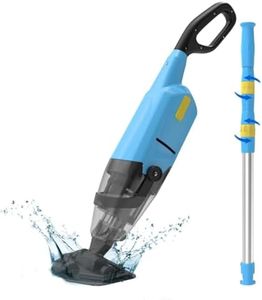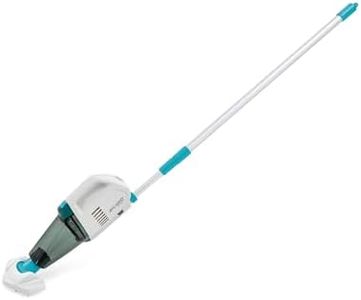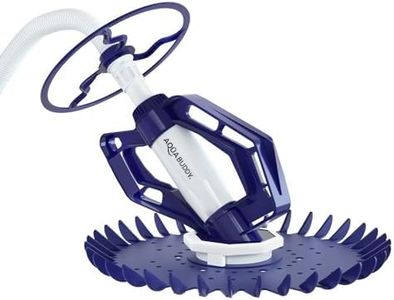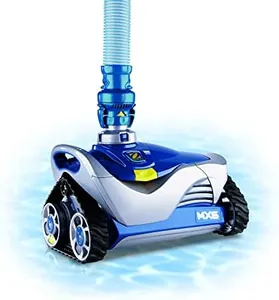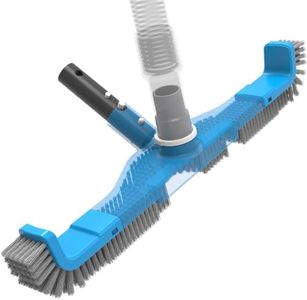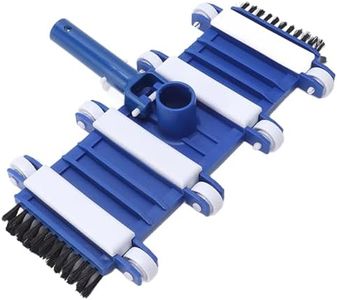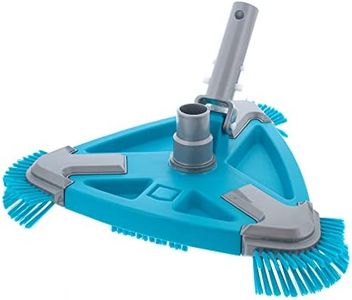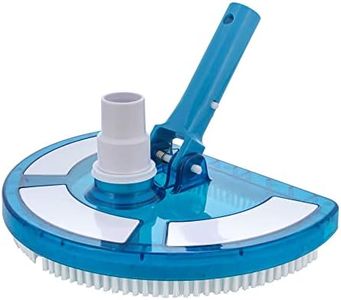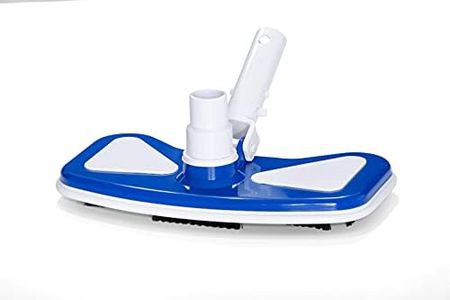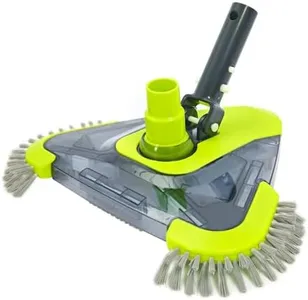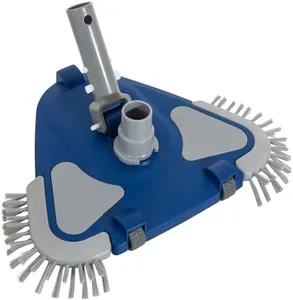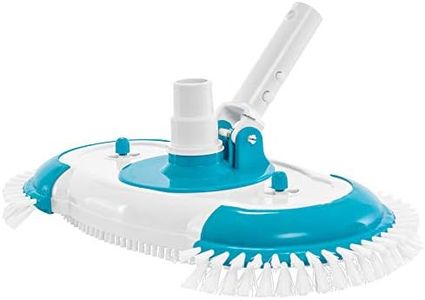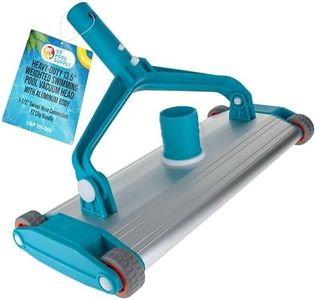We Use CookiesWe use cookies to enhance the security, performance,
functionality and for analytical and promotional activities. By continuing to browse this site you
are agreeing to our privacy policy
10 Best Pool Vacuum Heads
From leading brands and best sellers available on the web.Buying Guide for the Best Pool Vacuum Heads
Choosing the right pool vacuum head makes cleaning your pool easier and more efficient. Before making a purchase, consider the size and shape of your pool, the type of debris you typically encounter, and your pool's surface material. By understanding the main features of vacuum heads, you can select one that will be comfortable to use and effective in keeping your pool sparkling clean.Head Shape and SizeThe shape and size of a pool vacuum head determine how well it can maneuver around your pool and how much surface area it can clean at once. Common shapes include rectangular, triangular, and butterfly-shaped heads. Rectangular and butterfly shapes cover larger areas quickly, making them good for open, flat pools, while triangular heads do well in corners and tight spaces. Size also matters—larger heads clean faster but can be harder to manage in small or uniquely-shaped pools, while smaller heads are more precise but take longer for large pools. Think about your pool’s layout to choose the shape and size that fits best.
Weight and BuoyancyThe weight and buoyancy of a vacuum head affect how well it stays on the pool floor while cleaning. Heavier heads are better for keeping steady contact with the surface, especially in pools with strong currents or sloped floors, and are well-suited for concrete pools. Lighter heads may float up, making them less effective unless you have a very gentle pool environment or a vinyl liner that could be scratched by heavy equipment. If your pool floor gets slippery or is uneven, go for a heavier vacuum head; for delicate surfaces, a lightweight model is safer.
Brush Type and QualityThe brushes on the vacuum head help remove dirt and algae as you push it along the pool floor and walls. Some heads have hard, stiff brushes for more scrubbing power, while others use softer bristles that are gentler on vinyl or fiberglass surfaces. If your pool surface is rough and you deal with stubborn dirt or algae, opt for vacuum heads with thick, sturdy brushes. For pools with delicate liners that can be scratched or punctured, choose heads with soft, flexible bristles.
Swivel or Fixed Hose ConnectionVacuum heads come with either a swivel or fixed hose connection, determining how easily the hose can move as you clean. Swivel connections make maneuvering much easier, as they prevent the hose from twisting and tangling. Fixed connections are simpler but can be restrictive, especially in larger pools or when cleaning corners. If you want more flexibility and less fighting with the hose, a swivel connection is the best choice.
Compatibility with Handles and HosesMake sure the vacuum head fits standard poles and hoses, or those you already own. Most heads are designed for telescoping pool poles and standard hose diameters, but it’s wise to double-check. If you have unusual or non-standard equipment, look for heads that can adjust to different sizes, or be prepared to buy matching parts. Compatibility affects how easily you can use the vacuum head without needing to invest in additional accessories.
Suction Port SizeThe size of the suction port on the vacuum head influences how quickly debris can be removed and whether larger particles are sucked up or left behind. Larger ports can handle bigger debris, which is important if you regularly deal with leaves or pebbles in your pool. Smaller ports offer more focused suction and can be more appropriate for fine sand or silt, but they may clog with larger debris. Look for a suction port size that matches the typical messes in your pool.
